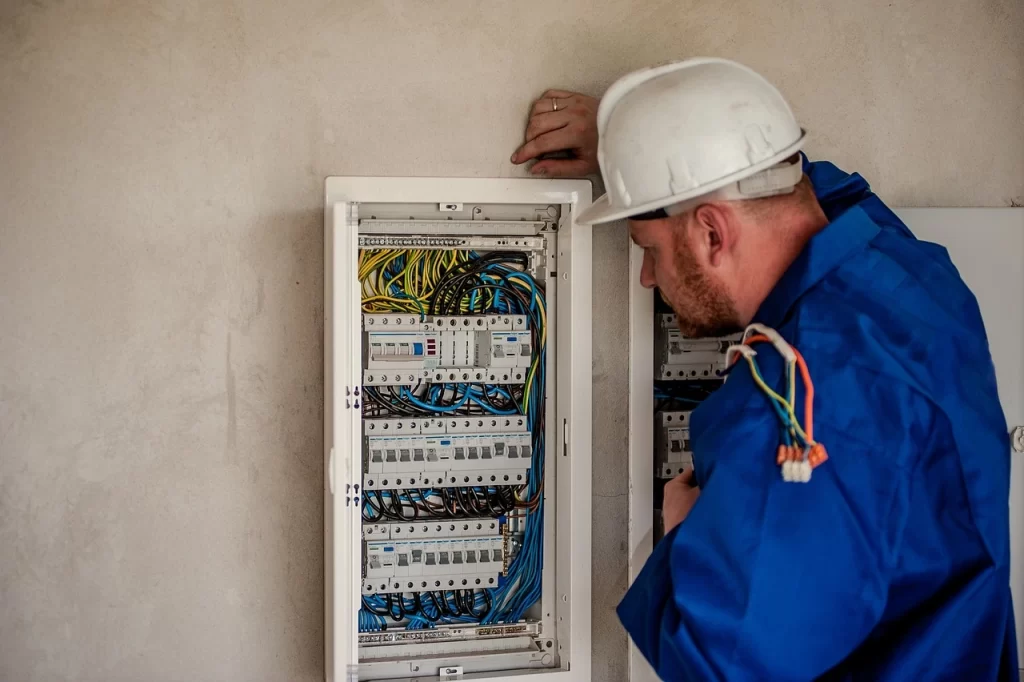The Ultimate Guide to Understanding Circuit Breakers and Electrical Safety
You’re relaxing in your favorite chair, reading a mystery novel, when it happens again: the power goes out, leaving you in the dark. It’s frustrating when your circuit breaker keeps tripping, but finding out the cause can help you understand why you’re in the dark.
While you could simply reset the circuit breaker each time it trips, understanding the cause of the problem will help you fix it once and for all. The most common causes of a circuit breaker tripping include an overload, a short circuit, or a ground fault. The following information will help you understand the differences between these three causes so you can best troubleshoot your circuit breaker and electrical system. Looking for a Electrician in Preston? We’ve got you covered! And if the problem persists, having a home warranty can help cover the cost of repairs, giving you peace of mind.

What is a circuit breaker?
Circuit breakers protect your home from electrical problems by interrupting the flow of electricity through a circuit whenever the electrical current becomes too high and dangerous. Without circuit breakers, electrical fires, electric shocks, and other forms of damage and injury would occur much more frequently.
Before delving into the details of how a circuit breaker works, it’s important to understand how electricity works. Electricity is the name we give to the movement of electric charge from one atom to another. We use electricity as a secondary energy source that comes from a primary energy source like natural gas, coal, or even solar energy.
The Basics of Electricity You Should Know
Electricity is composed of three main qualities: voltage, current, and resistance.
Voltage is the amount of pressure needed to move electric charge through a conductor. It flows at the speed of the current. Different types of conductors offer different levels of resistance, which is why some materials conduct electricity better than others. Remember the potato battery experiment you may have done in elementary school? The potato helps conduct electricity by acting as a bridge between two metals.
How Your Home’s Electrical System Works
A home’s electrical system typically consists of three different types of wires: a live wire that carries the electric current, a neutral wire, and a ground wire. (Live wires are usually black, neutral wires are usually white, and ground wires are usually green.) Like ships in the night, live and neutral wires typically never touch. Current flows through an appliance that creates a high resistance to the current; this process maintains the voltage at safe levels.
However, occasionally, something can cause the live and neutral wires to come into contact. When this happens, the resistance to the current is drastically reduced, which can cause dangerous voltage and current levels, even a fire. When these voltage and current levels are higher than expected, the circuit breaker trips. The breaker cuts off power to the circuit until the problem is fixed and safety is restored.
How do I know if a circuit breaker has tripped?
Usually, the main sign of a tripped circuit breaker is a power outage in a specific part of the house rather than throughout the entire house. You may also notice that multiple outlets in a single room, even a USB port, have stopped working.
If your circuit breaker trips, check your electrical circuits by going to your home’s electrical panel or fuse box. Make sure you know where the panel or fuse box is located and that its opening is easily accessible and not blocked by furniture, boxes, books, or shelves.
How to Identify and Check a Tripped Breaker
If your circuit breaker and fuse aren’t accessible or labeled, it’s a good idea to take the time to identify each breaker or fuse and the area it controls. This way, when a circuit or fuse trips or blows, you’ll know exactly which one it is. For areas that may have two breakers or fuses, such as the kitchen, you should carefully label which part of the kitchen is controlled by each of the two breakers. This will save you time and energy whenever the circuit breaker trips unexpectedly.
If a circuit breaker trips because its maximum amperage has been exceeded, the switch handle will have moved between the “on” and “off” positions. You may see a red area indicating that the circuit breaker has tripped. However, it depends on your electrical panel. For some panels, the tripping causes only minimal movement of the
Call Emergency Electrician in Preston
Feel free to contact us here or call us at Emergency Electrician Preston if you notice flickering lights, power outages, or any electrical issues.
Emergency Electrician in Preston certified team of electrician and any electrical emergency from power outages to faulty wiring.
The technicians we collaborate with: